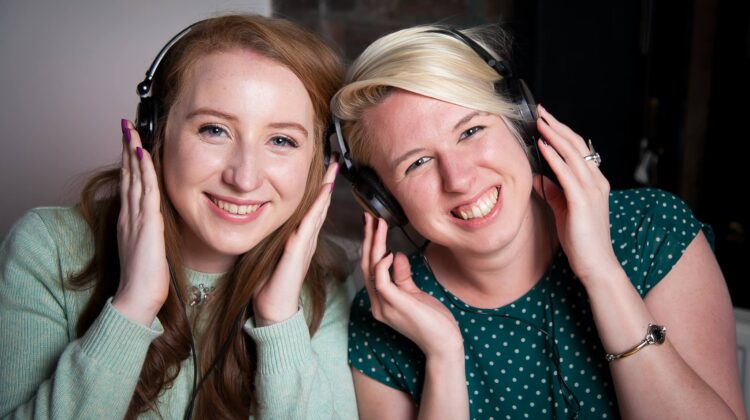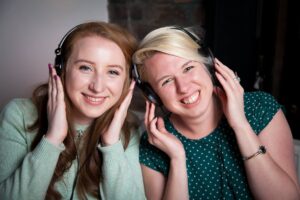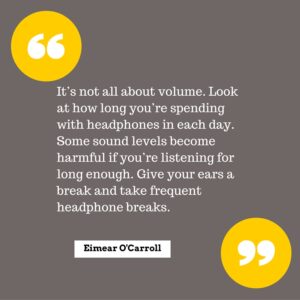

We interviewed Eimear O’Carroll, from Restored Hearing about what it’s like to live with tinnitus and how indoor environments can support people with tinnitus.
She has been working together with business partner Rhona Togher on hearing problems for almost 10 years now. The young entrepreneurs both studied physics and use their training to create products to help people with impaired hearing and to prevent hearing damage before it happens. They’re passionate about ridding the world of avoidable noise damage.
What inspired you to come up with the idea in the first place?
Rhona and I set up Restored Hearing six years ago because we both had tinnitus from playing in bands and attending concerts. It started as a school science project, we wanted to find out if we could create a solution to the problem of ringing in the ears. Our solution came second at a science competition here in Ireland and in the days following the competition we were inundated with requests for the therapy we’d developed. There were hundreds of people coming to us saying “Oh I have that too” or they knew someone who did – the problem was ubiquitous.
At that point, we knew there was a demand for such a product, and were keen to continue researching the problem of ringing in the ears. The only way to fund our research, and get the therapy out there helping people, was to become a business. So that’s what we did.
Subjective tinnitus is the presence of phantom noise where there is no logical source for said noise
What is it and how many people are affected?
300 million people worldwide have tinnitus. Around 5-10% of the USA experiences the condition to varying degrees of severity.
Subjective tinnitus is the presence of phantom noise where there is no logical source for said noise. It is a symptom of a malfunction in some part of the auditory system. The result of the damage is that the brain misfires, or sends false signals. These are then interpreted as sounds. The sounds are most commonly high-frequency noises, either single tones or white-noise type sounds. They can also be ringing, buzzing, hissing, chirping, or any type of sound at all.
There is also objective tinnitus which is caused by sounds outside the brain. The source is much easier to identify and so it’s usually treatable. Examples of objective condition are jaw clicking and hearing your pulse in your ear.
Tinnitus is not a disease; it’s a condition or a symptom. It can appear in one ear (unilateral) or two (bilateral.)
How does it impact daily life?
Tinnitus affects people in many different ways so there’s no one answer to this question. Frequently it will affect concentration levels and sleep. This can make performing well at work very difficult. Additionally, tinnitus often presents alongside depression and anxiety. It’s important for anyone with tinnitus to visit their doctor so that any and all factors impacting their quality of life can be addressed.
How can indoor environment better support people with tinnitus?

There’s a balance to be struck in the sound environment of an office to make it most comfortable for a person with tinnitus.
An incredibly silent work environment will often only serve to highlight the tinnitus, making it the most prominent sound in the landscape. On the other hand, some open plan offices can be very noisy and make it difficult to hear others speaking as the majority of those with tinnitus will have some degree of hearing impairment also.
What should we as colleagues and friends keep in mind?
Keep talking! Tinnitus can be a difficult topic for some people to talk about and as a result can be quite isolating. Talking about experiences of tinnitus and learning more about the condition is a great place to start understanding things from the perspective of someone who suffers from tinnitus.

